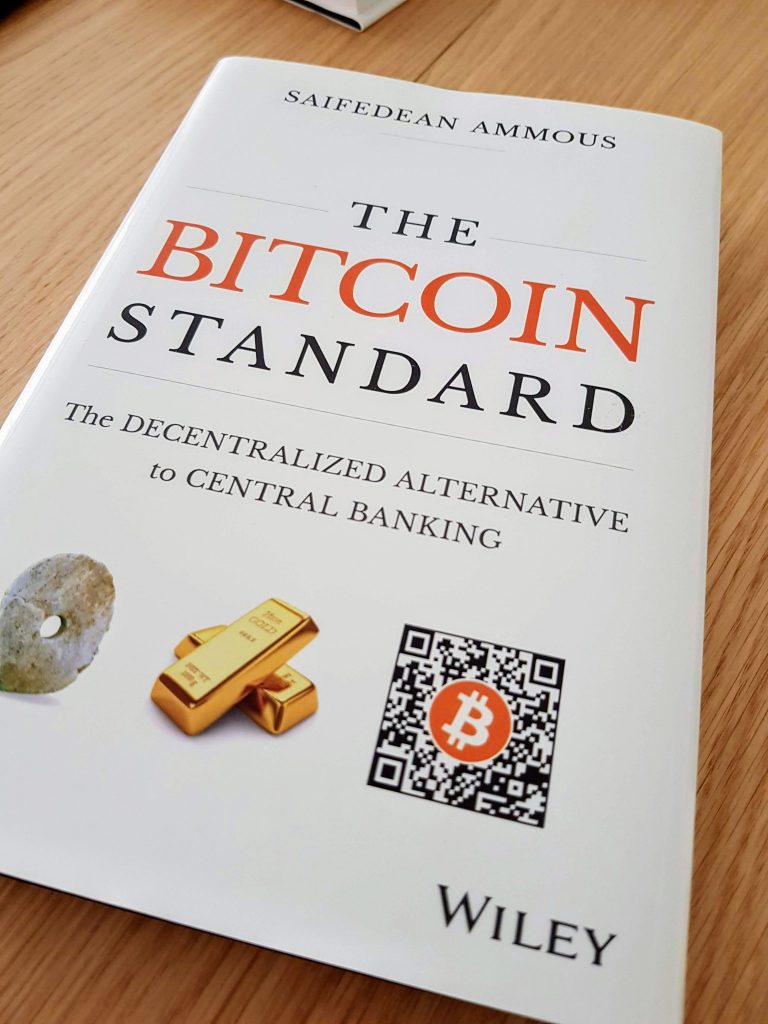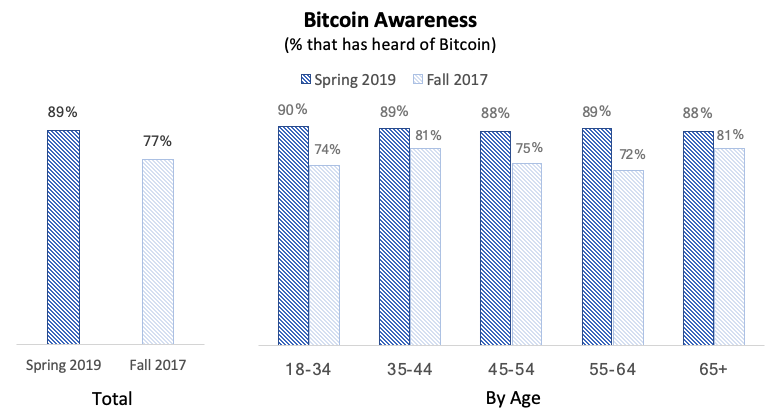Bitcoin’s history reveals Bitcoin as the most profitable asset in the last 1o years, unmatched despite its much-criticized volatility. The Bitcoin Conference 2021 held on June 4th and 5th in Miami attracted over 12,000 people. Anyone from Miami Major, billionaires, Silicon Valley tycoons, former congressmen, current senators, celebrities, to the average Joe and soccer mom was there. A lot has happened since Bitcoin launched in January 2009.
When I see prominent, “supposedly smart people” on the news still ask this question “What is Bitcoin exactly?” “where is its value?” 12 years after its inception in 2009, and after it grew as high as $69,000, I really scratch my head. My God really? Read the white paper!
Bitcoin is actually simple.
It’s a global peer-to-peer cash transaction system that doesn’t need third-party approval. When you pay cash for something, that transaction is final, irreversible, and secure because this money travels from your hands to the person in front of you. The only approval needed was between you and the person you gave the cash to. Bitcoin does the same thing digitally and globally. It’s the most sturdy and secure cash transaction system ever invented. There is a reason why people make it more complicated than this. I will cover this point down this article.
Each transaction is recorded in a ledger called the block and then “cloned and chained” in over 8,000 computers and protected by cryptographic keys. There is no single point of failure. Transaction verification (called mining) needs a 51% consensus of all the nodes in the network. The possibility of a double transaction is impossible.
To reverse a Bitcoin transaction a hacker would have to mount a 51% attack on the network that would cost around $6 billion dollar in equipment and knowledge. And even then the attack would fail.
- Imagine having as an asset that:
- is cryptographically protected by 8,000 computers
- has a code and security protocol constantly improved daily by thousands of programmers
- would cost $6 billion to steal it from you
- the blockchain was never hacked
- the government cannot access your wallet if you use blockhain.info
- Your money in the bank is not that safe!
But Bitcoin is also a commodity, whose price fluctuates.
This is the part of the Bitcoin history that created the most discussions and adds a layer of complication. In ten years Bitcoin has become the 3rd largest commodity in the world only after Lindt Chocolate ($104K) and Berkshire Hathaway ($436K). Because of this, Bitcoin has taken the role of an “asset class” rather than a “currency.”
In March of 2021, daily active addresses dropped to around 720,000 active addresses.
Many people buy Bitcoin daily and save it. A user who has money parked in Bitcoin is “using” it for investing or saving, but isn’t necessarily making transactions every day. This is why we also have to look at the total number of Bitcoins held in wallets.
This decline in active addresses indicates that people are not moving funds around and are choosing to hold their positions to acquire deeper gains.
A deeper analysis of Will Clement from the week of 7/30/21 through 8/5/21 paired with with metrics like CDD, Dormancy, SOAB, and ASOL reveal that long-term holders now have over 66% of supply, short-term are now down to nearly 20%. Before the main bull run began in October, long-term holder supply reached just over 68%.
Like any asset class, Bitcoin is subject to speculations, analysis, and discussions. However, the pure and simple foundational reason why Bitcoin exists — to effectuate cash transactions between two parties in an ironclad secure environment, has made Bitcoin strong against any speculations and grow hyperbolically despite initial and still ongoing media attacks, criticisms, and love/hate relationships.
The fundamentals of Bitcoin are solid and stood the test of time. No one explains it better than this book by Economic Professor Saifedean Ammous of Columbia University: The Bitcoin Standard. If you want to understand money, economics and Bitcoin in its full scope, power, and longevity, I highly recommend you read it.

Fidelity backs a study by Prof. Saifedean Ammous that Bitcoin will be worth $1 million because of
- decentralization
- finite and immutable supply (21 million Bitcoins limit)
- “hard money” properties.
Now it’s game over. The “Law of Accelerating Returns” favors cryptocurrency by far versus any other investment medium. Masses of investors are no longer in waiting mode. Bitcoin has gained adoption by over 825 financial institutions. It’s being worked into ETFs, pension funds, IRAs, futures, and other financial vehicles. Over 100 million people around the world (46 million Americans) own Bitcoin and 90% of Americans have heard of Bitcoin.

The last report published by the Cambridge Centre for Alternative Finance estimates that there are between 51.2 and 52.4 million cryptocurrency traders worldwide.
Out of these, here is the breakdown by country:
- North America (USA & Canada): 15.3 million
- Latin America: 1.05 million
- Africa: 1.6 million
- Europe: 10 million
- Japan: 6.75 million
- South Korea: 5 million
- Rest of Asia (besides Korea and Japan): 15.3 million
- Australia and New Zealand: 400,000
And there is another phenomenon to consider.
When Bitcoin rises in value it “lifts” other cryptocurrencies many times to a much higher rate of growth than Bitcoin itself. When Bitcoin goes up 10%, other crypto coins may go up 20% or 50% or 100% or even 1,000%. The cryptocurrency industry is very synergistic and dramatically more profitable than the stock market.
Bitcoin launched in 2009 without any fanfare and grew on its own strength and value.
- The beginning. On Halloween in 2008, a cryptographer operating under the pseudonym Satoshi Nakamoto published a paper that described an entirely new currency called Bitcoin, which was made out of information instead of paper. In Satoshi’s system, all the tasks performed by banks and credit cards, and even some chores of the federal government, were trusted to a peer-to-peer network instead. At first, it was only known and used by a few cryptographers in the computer programming community.
- The first Bitcoin commercial purchase. It was on 22 May 2010, when Laszlo Hanyecz made the first real-world transaction by buying two pizzas in Jacksonville, Florida, for 10,000 BTC, an amount that would surpass $600 million if held in April 2021. Expensive pizza!
- The first exchange of Bitcoins to fiat. There are countless solutions to convert our cryptocurrencies to fiat money and vice versa, but at the beginning of time, this was not so simple. The first transaction was registered on October 12, 2009, when New Liberty Standard bought a total of 5.050 BTC from Sirius for an amount of $ 5.02 through PayPal. This operation established that approximately 1.010 BTC was equivalent to $ 1, which is the first increase in value of the price of Bitcoin and undoubtedly a milestone in the history of Bitcoin exchanges, and began an unprecedented transformation.
- First investors. In 2010, enthusiasts founded a website called Bitcoin Market, which allowed individuals to exchange Bitcoins for dollars and, for the first time, provided a way for curious investors to participate.
- First Bitcoin millionaire. in 2011 an unconfident, shy 29-year-old named Charlie Shrem who grew up in a Syrian Jewish community in Brooklyn, New York started a Bitcoin business with $1,000. Within days, things went crazy. Then experience the ultimate crash. But he stuck to it and he eventually attracted an investment from the Winklevoss Brothers, the original inventors of Facebook. Through the market’s ups and downs, and even initial government adversity, he became the first bitcoin millionaire by 2013. He is now worth an estimated $40 million.
- First bank to integrate Bitcoin. In March, investment bank Morgan Stanley became the first big US financial institution to offer wealth management clients with a “high-risk tolerance” access to Bitcoin funds. This was a significant sign of acceptance in Bitcoin’s history.
- First large Bitcoin Index Fund. In February 2021 Fidelity Digital Assets started the Wise Origin Bitcoin Index Fund with $13 billion.
-
Finserv Inc. (NASDAQ: FISV) announced in June 2021 that 10,000 Financial Institutions and banks can now let customers buy, sell, and hold Bitcoin through their bank accounts.
- In the early years, Bitcoin code maintenance and development was mainly governed by Gavin Andresen a key figure in Bitcoin’s history. He is a mild-mannered American computer scientist, 48-year-old picked by the real Satoshi Nakamoto as his successor in late 2010. Andresen became the “core maintainer”—chief developer—of the open-source code that defines the rules of Bitcoin and provides the software needed to make use of it. Andresen also acted as the chief scientist for the Bitcoin Foundation after it was formed in 2012.
- In 2015 MIT programmers started The Digital Currency Initiative. This is a neutral way of funding Bitcoin developers, allowing them to continue to improve the software that powers the currency without the worry of an intrusive corporate mandate or ideology. While the DCI has since expanded in scope, that work continues as a crucial part of the Bitcoin mission. Developers Wladimir van der Laan and Cory Fields have helped with the production and successful deployment of several new versions of Bitcoin Core, Bitcoin’s reference software, each bringing optimizations, usability improvements, and security upgrades.
Congratulations on reading this long article about Bitcoin’s history. Now you know a lot more about Bitcoin and its impact on the world. I hope you are excited.
Riccardo Ferrari
RiccardoFerrari.com




